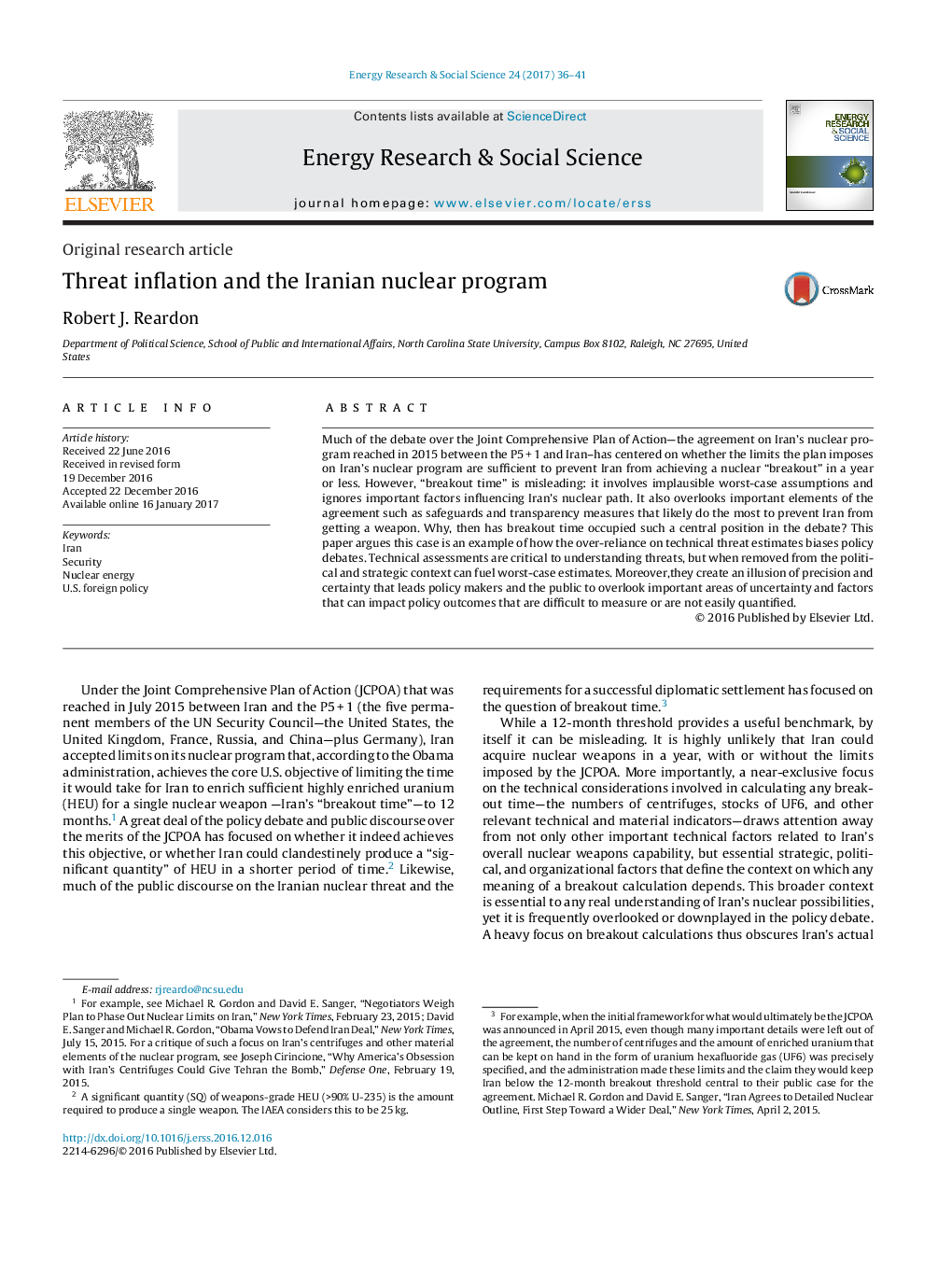| Article ID | Journal | Published Year | Pages | File Type |
|---|---|---|---|---|
| 6463908 | Energy Research & Social Science | 2017 | 6 Pages |
Much of the debate over the Joint Comprehensive Plan of Action-the agreement on Iran's nuclear program reached in 2015 between the P5Â +Â 1 and Iran-has centered on whether the limits the plan imposes on Iran's nuclear program are sufficient to prevent Iran from achieving a nuclear “breakout” in a year or less. However, “breakout time” is misleading: it involves implausible worst-case assumptions and ignores important factors influencing Iran's nuclear path. It also overlooks important elements of the agreement such as safeguards and transparency measures that likely do the most to prevent Iran from getting a weapon. Why, then has breakout time occupied such a central position in the debate? This paper argues this case is an example of how the over-reliance on technical threat estimates biases policy debates. Technical assessments are critical to understanding threats, but when removed from the political and strategic context can fuel worst-case estimates. Moreover,they create an illusion of precision and certainty that leads policy makers and the public to overlook important areas of uncertainty and factors that can impact policy outcomes that are difficult to measure or are not easily quantified.
